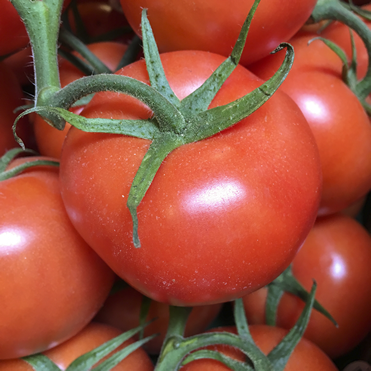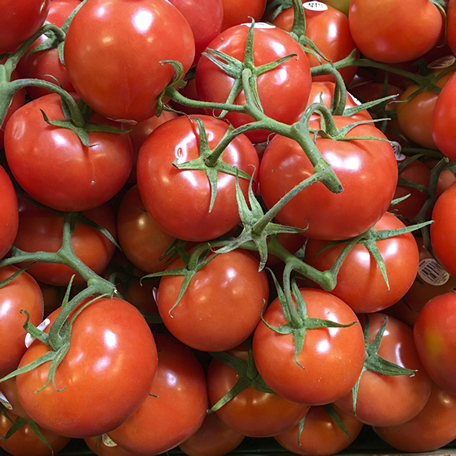Tomatoes 102

Spring is here! The season we await so we can enjoy the pleasure of biting into a plump, juicy, vine-ripened, homegrown tomato. As San Diegans, we live in perfect tomato climate—an ideal combination of sunlight, heat, and an extended warm season. This lends to easy tomato growing, even for the most challenged gardener. In fact, tomatoes thrive, and even excel, under stress. Even under less ideal conditions, they rise to the occasion and produce a beautiful crop of fruit ranging in color, shape, size, and flavor. You might even say that there’s something to admire about the determination of a tomato. With a few helpful hints, you can reach a whole new level of tomato cultivation and further enjoy the experience.
Before planting your tomatoes, it’s important to select varieties that fit both the growing conditions in your yard and your eating preferences. One thing to consider is the size of your garden. For small gardens or containers, plant determinate tomatoes. They’re bushy and have genetic characteristics that limit their growth to about three or four feet in height. I’ve had tremendous success with ‘Oregon Spring’ and ‘Celebrity’ tomatoes.
With larger spaces, you have the luxury of choosing determinate and/or indeterminate tomatoes. The beauty in planting indeterminate tomatoes is they will produce tomatoes over a longer period of time. You also have a larger selection to choose from since the majority of tomatoes fall under this category.
Next, consider how you plan to eat your tomatoes. Here are a few of my favorites: (Note: ‘I’=Indeterminate; ‘D’=Determinate)
Cherry tomatoes for snacking or salads: ‘Sungold’ (I) and ‘Black Cherry’ (I) are both super hardy plants known for producing an abundance of small, sweet fruit.
Tomatoes for making sauces or canning: ‘San Marzano’ (I) or ‘Roma’ (D).
Slicing tomatoes: ‘Rutgers’ (I or D) and Black Krim (I) are sweet medium sized meaty tomatoes sweet.
Novelty tomatoes: ‘Green Zebra’ (I) has striped deep lime green fruit with a sweet tangy taste.
Once you have selected your tomato variety, it’s time to place it in the ground (or pot). When planting tomatoes, always plant deep. Remove all leaves from the lower two thirds of the stem and bury deep in the soil. The plant will send out new roots along the lower stem, providing a more extensive and robust root system.
 If you’re starting with small plants, remove all blossoms until they are established. This allows energy to go towards raising a strong healthy plant. Once your plant is growing well, let the flowering begin. Remember to fertilize once they start flowering. Make sure there are plenty of bees to pollinate your tomato blossoms. If you find there is a shortage of bees, invite them to your garden by providing water for them and planting borage, lavender, pineapple sage, and African blue basil or give the stems a little shake every day
If you’re starting with small plants, remove all blossoms until they are established. This allows energy to go towards raising a strong healthy plant. Once your plant is growing well, let the flowering begin. Remember to fertilize once they start flowering. Make sure there are plenty of bees to pollinate your tomato blossoms. If you find there is a shortage of bees, invite them to your garden by providing water for them and planting borage, lavender, pineapple sage, and African blue basil or give the stems a little shake every day
Finally, remember to provide support for your tomatoes. For bushier determinate tomatoes, a tomato cage works fine. For the more tall and prolific indeterminate tomatoes, you will need a taller structure for tying up limbs; keeping them off the ground will reduce their susceptibility to diseases. A tall vertical trellis works great. With this type of support, you can create an espalier effect, allowing the plant to spread out and benefit from adequate airflow. You can also create a tall wooden box frame above your tomatoes, securing tomato limbs to the frame.
These techniques will increase your harvest, and having more tomatoes means more opportunities for summer dinner parties and sharing with friends and neighbors. And remember, a healthy garden is a harvested garden! For additional information, please see UC ANR Publication #8159 Growing Tomatoes in the Home Garden at http://ipm.ucanr.edu/PMG/GARDEN/VEGES/tomato.html
Sommer Cartier is a UCCE Master Gardener volunteer.

